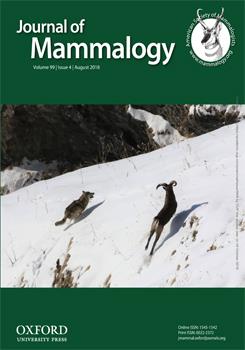Our research attempts 1) to link the distribution and abundance of eastern tur (
How to translate text using browser tools
8 June 2018
Modeling the distribution and abundance of eastern tur (Capra cylindricornis ) in the Caucasus
Alexander Gavashelishvili,
Yuriy A. Yarovenko,
Elmar A. Babayev,
Giorgi Mikeladze,
Zurab Gurielidze,
Davit Dekanoidze,
Niko Kerdikoshvili,
Levan Ninua,
Nika Paposhvili
ACCESS THE FULL ARTICLE

Journal of Mammalogy
Vol. 99 • No. 4
August 2018
Vol. 99 • No. 4
August 2018
abundance
Biome
Capra spp.
distribution
generalized additive models
glacial refugium
LGM




